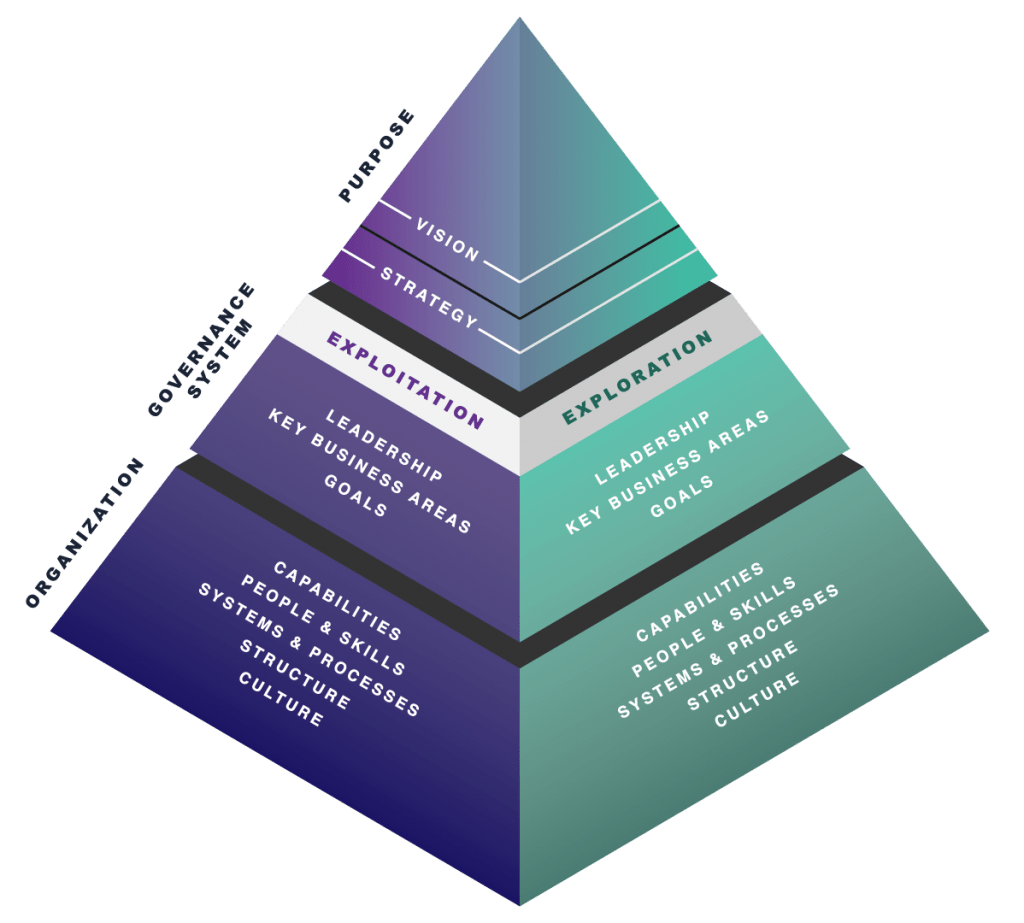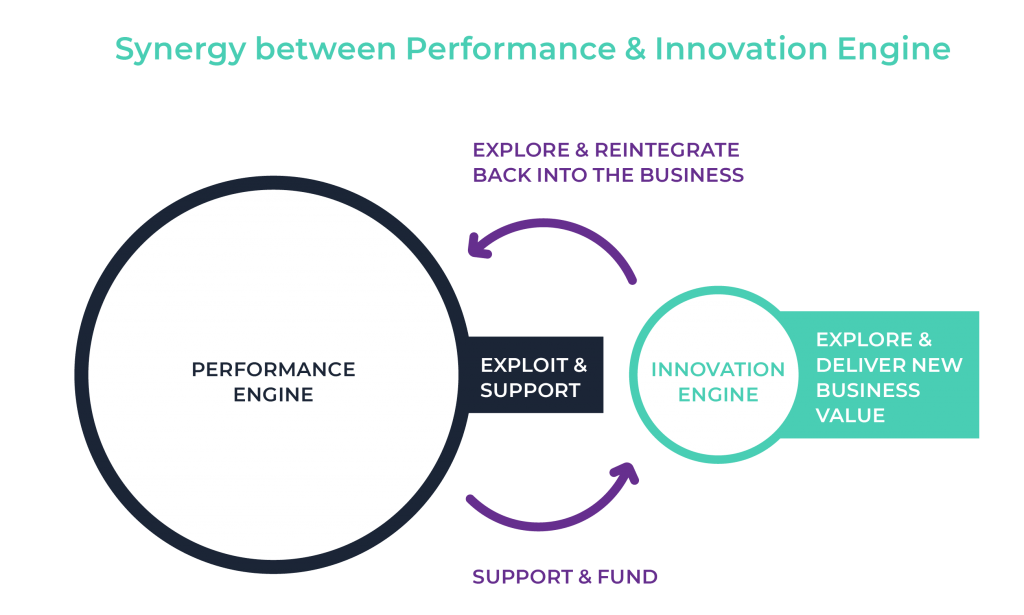Internal hostility, waste of valuable resources and a general sense of demotivation is often the end result of a much-anticipated yet uncoordinated effort to change. As a result, organizations often return to doing what they know best, maintaining and strengthening the same processes, mindsets and systems that they wanted to change in the first place. A key paradox of innovation arises: an attempt to change leading to more of the same.
We believe that uncoordinated attempts for innovation are doomed to fail. We believe that the power of ideas needs to be accompanied by an equally robust innovation strategy.
This is why we have developed the Exploration Exploitation Pyramid.

The exploration exploitation pyramid is based on the premise that successful innovation is not just about the disruption of your business. It is about the discovery of a way to create new, customer-centric, value-adding products and services while at the same time ensuring that the organization exploits its existing core business.
Balancing Exploration and Exploitation
But what do we mean by exploration and exploitation? To put it simply exploitation refers to making the most out of your existing business model and capabilities. It is not only about protecting your core business by also finding innovative ways to use existing resources to create more value for customers and a more optimized service. In order to do that, leadership should identify key exploitation business areas and set clear and measurable goals. An organizational setting that supports the existing business model is based on strengthening existing capabilities and supporting the right people with the right skill sets, designing a structure that supports all core business areas and promoting a culture of ‘smart innovation’ that supports and strengthens the core business.
Exploration is to look beyond your current business model to find new opportunities for growth. It is about innovating on a more radical scale through developing new capabilities and expanding into new markets. Leadership for exploration is based on empowerment creating a safe space for new ideas to emerge and also have the power to see them through. A robust governance system for exploration sets goals that are relevant to the key business areas for exploration set by the leadership team. The organizational context is also one that is set around flexible structures, exchange of information and knowledge sharing while at the same time having a clear set of goals and resources.
Avoiding success traps and failure traps by creating synergies between exploration and exploitation
Exploitation and exploration are often regarded as contradictory demands. However, too much exploitation can lead to success traps whereas too much exploration can cause failure traps. The key to avoiding such strategy traps is to shift from an either/ or to a both/and approach. This both/and response to this dual demand is often referred to as ambidexterity; to be equally dexterous in both exploration and exploitation by creating synergies between your core business (Performance Engine) and your new business (Innovation Engine).

Don’t let the future catch you by surprise: innovate without killing the Performance Engine. That being said, don’t let the Performance Engine choke the Innovation Engine.
Today’s imperative is to build ambidextrous organizations that manage both exploration and exploitation simultaneously.
Stay tuned for future posts surrounding the topic of Exploitation and Exploration, and the balance between as we dive deeper into this framework!